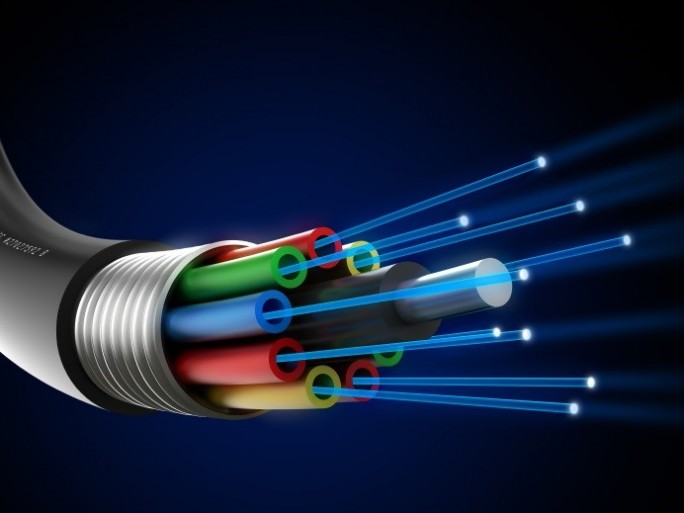Brief Outline
The term “alternative network,” or “altnet,” refers to a paradigm change in how we see and use digital information. Altnet provides a decentralized alternative to centralized servers and internet service providers, enabling users to exchange and access material directly without the need for conventional middlemen.
What is Altnet?
A decentralized network protocol called altnet allows people all over the world to share files and communicate with one another peer-to-peer.
In contrast to traditional networks, which store and disseminate data via centralised servers, Altnet uses the combined processing capacity of its users to enable direct communication.
The importance of Altnet within the digital world
In a generation where issues regarding privacy, factual possession, and censorship are developing, Altnet stands out as a beacon of digital freedom. By democratising data access and decentralising governance, Altnet has the energy to essentially adjust the net and repair humans’s experiences of enterprise in their online lives.
The Concept of Altnet
Peer-to-peer networking
The middle concept of Altnet is peer-to-peer networking, where every person acts as both a purchaser and a server to facilitate direct factual change with other customers. This distributed architecture eliminates the shortcomings and single points of failure of centralised systems while additionally improving the scalability and durability of the community.
Decentralized file sharing
Unlike trendy file-sharing structures that rely on centralised servers to store and distribute records, altnet utilises a decentralised method where files are broken into smaller bits and disseminated across several nodes. This increases the community’s resilience to censorship and statistics tampering while expediting the download process by using parallel connections.
How Does Altnet Work?
Overview of the technology
With its peer-to-peer design, Altnet allows each user to contribute to the network’s total processing capacity by acting as both a client and a server. The Altnet protocol finds the closest and quickest nodes that can process a file request from a user, guaranteeing optimum speed and dependability.
Peer connections and nodes
Nodes, or individual computers linked to the Altnet network, are essential for communication and data transmission. Nodes cooperate and share data over peer-to-peer connections to guarantee file transfer without interruption, despite network or geographic limitations.

Procedure for distributing files
A file is divided into smaller segments, or “chunks,” when it is uploaded to the Altnet network. These chunks are then dispersed across many nodes for storage and replication. The protocol finds the closest nodes containing the necessary chunks when another user requests the same file, starting parallel downloads that greatly lower latency and increase transfer rates.
Benefits of Altnet
Privacy and Security
Altnet improves security and privacy by decentralising data transmission and storage, which lowers the possibility of censorship, spying, and data breaches. Because files are dispersed across many nodes, there isn’t a single point of failure, which makes it naturally resistant to illegal access and cyberattacks.
The ability to withstand censorship
Altnet functions independently and is unaffected by outside influence or manipulation, in contrast to centralised platforms that may be vulnerable to corporate meddling or governmental censorship. Information access is guaranteed even in the event of network outages or governmental crackdowns because to this resiliency.
Reduced expenses and enhanced effectiveness
Altnet provides a more economical and effective substitute for expensive infrastructure and middlemen when it comes to sharing and distributing information. Due to the voluntary nature of user contributions to computer resources. It is a financially feasible choice for both people and enterprises. Traditional hosting providers include overhead costs and recurrent fees.
Applications for Altnet
File sharing and torrenting
In the world of file sharing and torrenting, where people trade software, movies, music, and other digital information. Without depending on central servers or copyright holders, Altnet is most often used. Through the use of the combined bandwidth and storage capacity of its users. It enables anonymous, quick, and secure file transfers worldwide.
Networks for delivering content
Applications for altnet may also be found in content delivery networks (CDNs), which distribute huge files and media assets across geographically separated servers in order to optimise end-user delivery. Altnet CDNs may lower latency, bandwidth expenses, and server stress by using peer-to-peer connections and decentralising content delivery, improving the overall user experience.
Applications that are decentralised
With the emergence of decentralised finance (DeFi) and the blockchain era, Altnet offers the essential framework for growing and imposing decentralised apps (dApps) that function without the need for middlemen or primary authority. Developers may additionally design obvious, censorship-resistant programmes that prioritise consumer privacy and autonomy in their usage.
Challenges and Limitations
Legal considerations and problems with piracy
While there are many security, privacy, and decentralisation advantages to Altnet, there are also issues with copyright infringement, piracy, and illicit material distribution. Direct file sharing between users makes it difficult to control and monitor the flow of copyrighted content, which might have legal ramifications for network operators as well as users.
Speed and scalability
Although Altnet is peer-to-peer and has a decentralised design, it has issues with speed and scalability, especially when handling massive file transfers or network congestion. Since each node’s availability and dependability play a major role in the network’s performance, scaling problems might occur as the user base increases, affecting the network’s overall throughput and responsiveness.
Accessibility and user interface
Although technically skilled users may find Altnet straightforward and simple to use, its setup, configuration, and navigational complexity could prevent it from being widely used. To reach a wider audience and close the divide between early adopters and general users. Altnet apps must be made more accessible and user-friendly.
Future prospects
Integration with blockchain technology
Altnet stands to gain from further integration with smart contracts and decentralised ledgers as blockchain technology develops and matures. To improve security, transparency, and confidence in its ecosystem. It may use blockchain technology for identity management, content attribution, and transaction validation. This will open up new use cases and applications.
Potential impact on the internet infrastructure
The decentralisation of power and distribution among participants in Altnet might result in a significant transformation of the internet infrastructure. With user autonomy, privacy, and freedom of speech as top priorities, it provides a competitive alternative to centralised platforms and conventional service providers in the face of growing criticism.
Obstacles to adoption and regulatory issues
In many countries, Altnet is confronted with adoption obstacles and regulatory hurdles. Despite its potential advantages, authorities want to retain control over digital communications and content distribution. It will necessitate cooperation between policymakers, civil society groups, and technology entrepreneurs. To solve legality, security, and accountability issues in order to overcome regulatory barriers and promote wider use.
Summary
Finally, Altnet offers a decentralised substitute for conventional internet infrastructure, marking a revolutionary advancement in the area of digital networking. It has the potential to democratise knowledge and transform the digital environment for future generations. By enabling people to exchange and access material directly, without the need for middlemen or centralised control.
FAQs
Is Altnet permitted?
Despite Altnet’s decentralised nature, its use is subject to legal restrictions based on the shared material and the country in question.
In comparison to conventional file-sharing techniques, how quick is Altnet?
The quantity of active nodes and the accessibility of the requested file chunks are the two main factors influencing Altnet’s performance. It may sometimes be quicker than more conventional techniques, particularly for well-known topics.



2 Comments on “What Is Altnet and How Does It Work?”